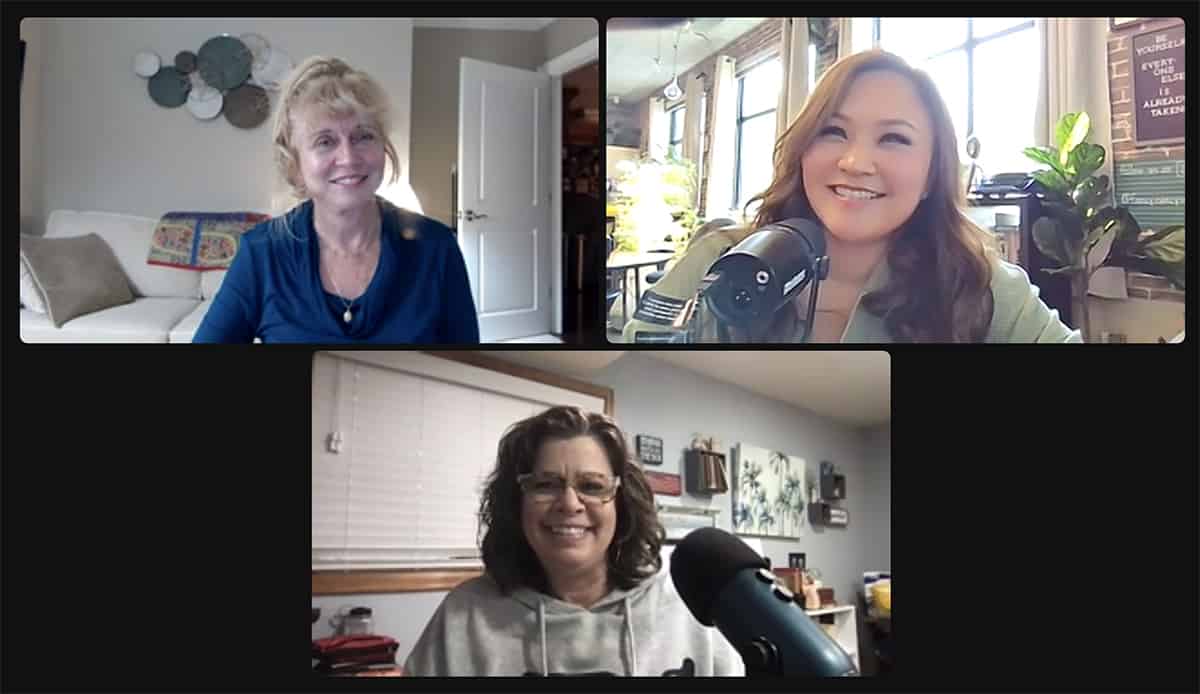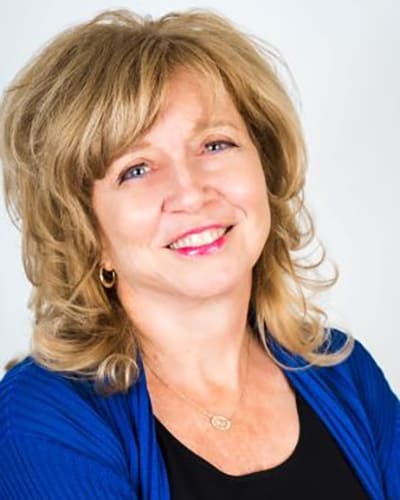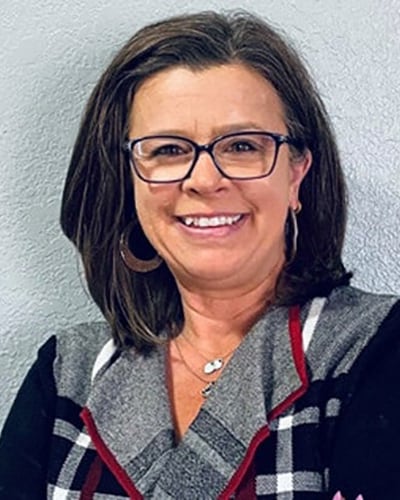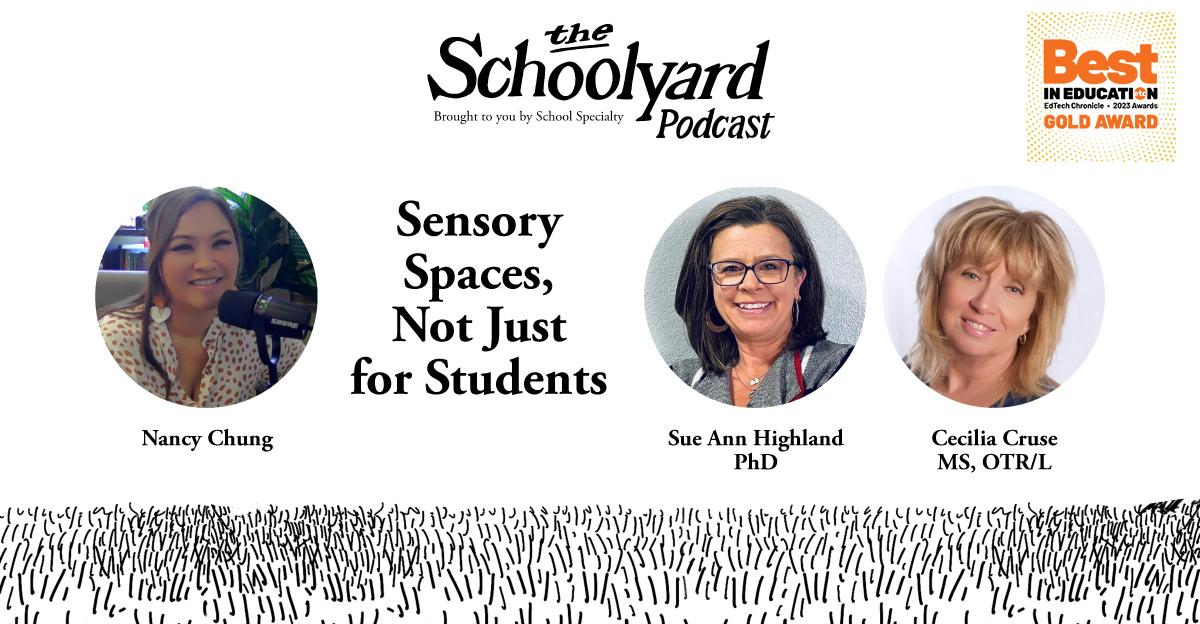Sensory spaces are carefully crafted to create a multisensory experience that can help us relax, focus, or simply enjoy the moment. In this episode, host Nancy Chung interviews occupational therapist and School Specialty’s subject matter expert for Special Needs, Cecilia Cruse. We also welcome back School Specialty’s National Education Strategist, Dr. Sue Ann Highland.
Good for the Margins, Good for the Masses
Cecilia recalls the story of “Cedric,” a student with autism and high sensory preferences. When it was recognized that Cedric could get the sensory diet he needed from a sensory space with a beanbag chair and weighted blanket, teachers started using the space with him before he escalated towards a meltdown.
Over time, teachers and industry experts have come to realize that these types of sensory spaces are helpful for all students, as well as teachers, administrators, and just about everyone else. What perhaps began as an accommodation for a marginal few students is now a component of universal design.
Universal design is, what was designed for the margins becomes good for the masses. In this case, Cedric and many other students like him needed something special for their needs. And now we’re seeing, especially post-pandemic, that these sensory spaces hit a need for social emotional learning and health and wellness.
Cecilia Cruse
Sensory Poll to Learn Student Preference
Do you like visual input? Do you like audio input? Take a poll to find out student sensory preferences for when they need to self-regulate. Some students may benefit from something as simple as chewing gum for oral motor self-regulation or a calming aromatherapy scent for olfactory senses. You can use fidgets for tactile input, a swing or rocking chair for vestibular input, or weighted products for deep-pressure proprioceptive input.
Different students will have different needs, sometimes changing by the day, so it’s important to find out what everyone needs and try to provide several kinds of input options.
When it comes to how we implement it, just try it. Jump in and learn together. Learn with your students and let them tell you what they like and what they don’t like.
Dr. Sue Ann Highland

Sensory Spaces Help Reduce Anxiety and Stress, for Everyone
Teachers, principals, and staff should also be considered when designing sensory spaces. Easing their stress and anxiety is important for their well-being and the well-being of the students in their classroom. And showing them their needs are important is a great way to clearly convey that their contributions are valued and appreciated.

Cecilia Cruse MS, OTR/L
Cecilia has dedicated herself to the health and well-being of others throughout a 38-year career as a registered and licensed Occupational Therapist, credentials she retains today (OTR/L). Her experience in pediatrics with school-based services (including preschool and Head Start programs), acute care, and outpatient pediatric settings, including Augusta University and Children’s Healthcare of Atlanta at Scottish Rite, have made her a valuable resource to educators and communities. She has shared her knowledge on national television, in presentations at various national, state, and local conferences, and as a published author.

Sue Ann Highland, PhD
Dr. Sue Ann Highland is the National Education Strategist for School Specialty. As an Education Strategist, she uses her expertise in educational initiatives and administrative leadership to help teachers and leaders transform teaching and learning.
In addition to her work at School Specialty, Highland has also served as a change and improvement consultant to more than many Colorado business and educational institutions since 2004. In this capacity, she enhanced personnel performance, streamlined organizational operations, and introduced process improvements that enhanced productivity for companies and schools. She also has several years of experience managing a team that transforms learning environments for districts.
Highland derives her expertise from over 25 years in education, with half of those years in rural districts. She has worked as an Organizational Development Director, an elementary school principal, and a school district’s Director of Federal Programs, Curriculum and Instruction. In these positions, Highland was responsible for professional development and daily management, as well as for leading initiatives and evaluating staff performance and results. She specializes in improvement, turnaround, and change management.
Highland received a Master of Arts in Educational Leadership and Policy Studies from the University of Northern Colorado and a Ph.D. in Industrial/ Organizational Psychology from Grand Canyon University.







Leave a Reply